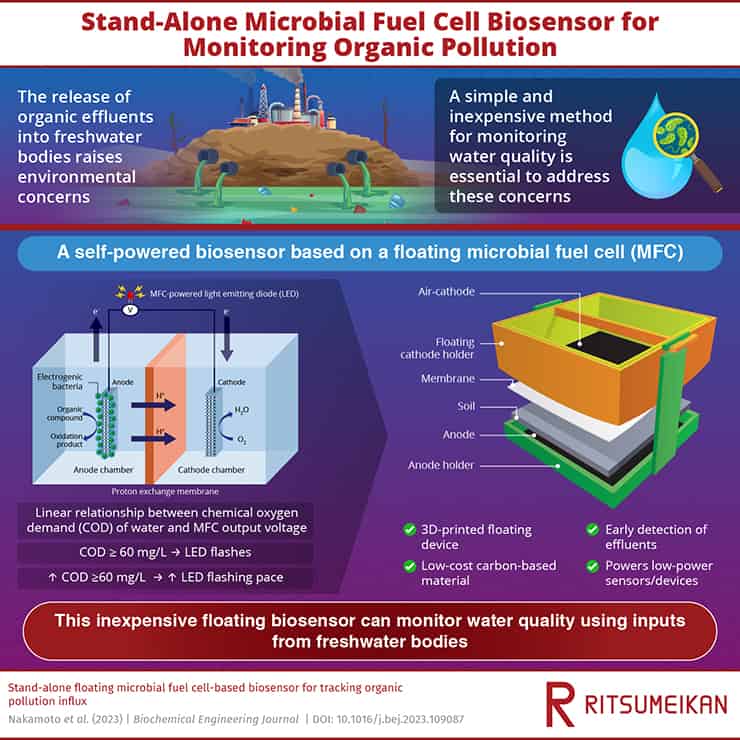
Polluted freshwater is one big environmental nightmare — and it’s getting more and more common. Discharging waste into freshwater sources can harm aquatic ecosystems and potentially even affect the water we drink. However, the way we check water quality is complicated and expensive.
Researchers in Japan have now developed a self-powered, cost-effective device to monitor water quality in freshwater lakes and rivers. This device floats on water and is made from affordable carbon-based materials.
Microbial fuel cell
Organic wastewater discharge is an alarming issue with freshwater lakes and rivers, write the researchers from Ritsumeikan University, Japan. Unfortunately, polluted wastewater is commonly discharged and makes its way into freshwater systems. These discharges include food scraps of domestic waste, as well as industrial and agricultural waste. These can decompose in water and release nutrients that in turn, lead to excessive algae growth, which can kill off aquatic plants and fish.
Therefore, monitoring freshwater pollution is an important task. But there’s no easy way to do it.
Freshwater bodies can be polluted by a wide variety of sources and pinpointing the exact source of pollution can be complex. Then, once in the water, pollutants can undergo various chemical, biological, and physical changes. They can bind with other compounds, be broken down by sunlight or bacteria, or settle to the bottom. This makes it hard to trace and measure them accurately. Lastly, there’s also the matter of cost.
Scientists can track varied types of pollution, but regular monitoring can be expensive, especially when using advanced analytical methods. Also, some freshwater sources may be located in remote or difficult-to-access areas, making regular monitoring challenging.
This is where the new sensors come in.

The researchers in Japan developed floating biosensors for monitoring water quality at the input of freshwater lakes and rivers. The sensors are based on bacteria that produce electric currents based on their metabolism. This microbial fuel cell (MFC) generates more energy if the amount of organic pollutants is increased.
To create this system, the team filled the anode (one of the two main battery components, where oxidation takes place) with soil containing electrogenic bacteria. This bacteria continuously decomposes organic matter in the water and converts it into electricity.
The electricity then powers an LED. The LED starts flashing when the level of organic contaminants is above a specific threshold and blinks more the more pollution increases.
“We developed a self-powered, stand-alone, floating biosensor based on a microbial fuel cell (MFC) for early organic wastewater detection. The MFC case was fabricated by a 3D printer and the electrodes were fabricated from low-cost carbon-based materials,” remarks Professor Kozo Taguchi from the College of Science and Engineering, Department of Electrical and Electronic Engineering, Ritsumeikan University, who led the study.
“Because the MFC biosensor produces its own electricity, it requires no external power supply. Moreover, it can be used in early detection systems that monitor influxes of organic wastewater in freshwater bodies.”
The technology is particularly exciting because it is inexpensive and sustainable. You don’t need an external battery, the materials are low-cost, and the device can continuously track organic contamination.
It’s never been more important to safeguard our water systems. As the world is using more freshwater than ever before, and with climate change, water systems are under more and more stress each year. With the increase in water consumption, water quality is also facing serious challenges. Over 5 billion people could be exposed to polluted freshwater by the turn of the century.
The emergence of this novel microbial fuel cell biosensor represents an important weapon in the fight against freshwater pollution. Addressing the global water crisis requires a multifaceted approach and technological innovations like this play a critical role.
The study has been published in the Biochemical Engineering Journal.


